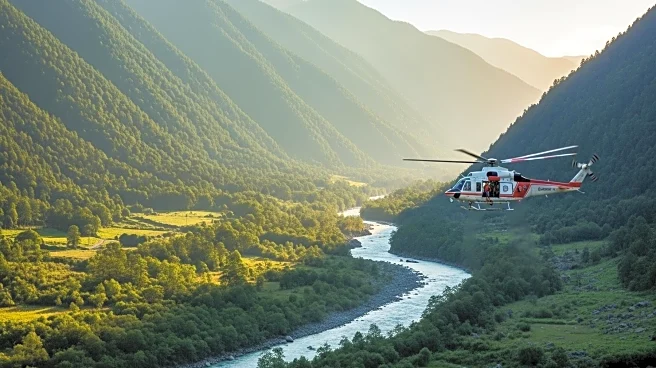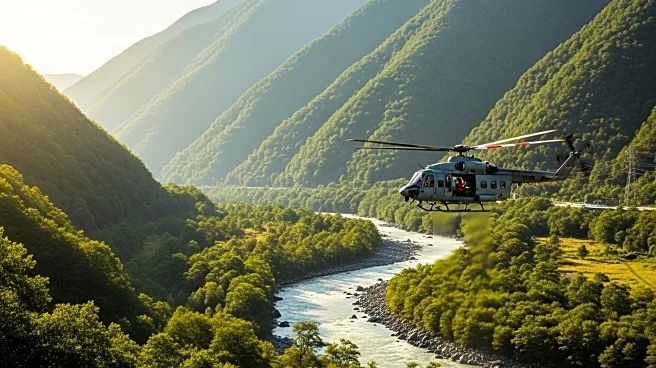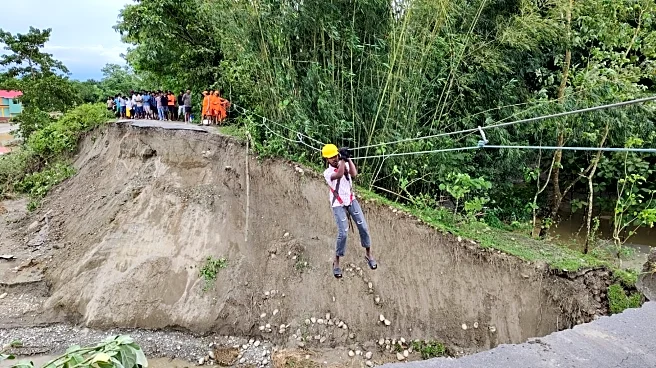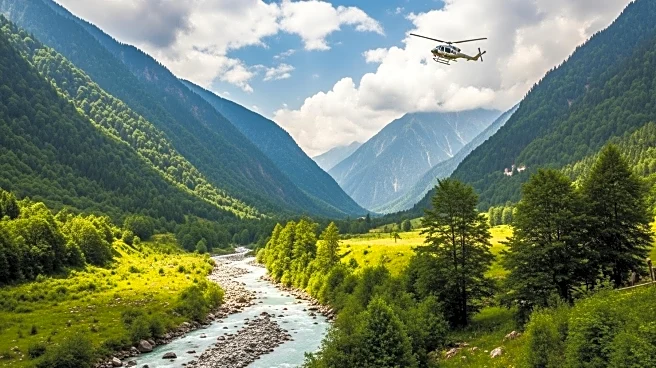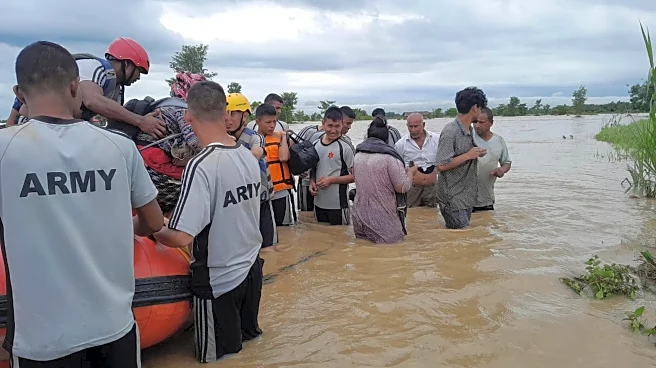What's Happening?
Rescue teams in Nepal and India are working to deliver emergency aid following severe floods and landslides caused by torrential rains. The downpours, which began on October 3, have resulted in over 70 fatalities, with Nepal reporting at least 46 deaths and India confirming 28. The heavy rains have subsided, but the aftermath has left several areas inaccessible due to blocked roads and destroyed bridges. In Nepal, security forces are using helicopters and motorboats to reach isolated communities, while in India, the tea-growing hills of Darjeeling have been particularly affected, with numerous landslides and destroyed homes. Efforts are ongoing to clear highways and assist stranded travelers.
Why It's Important?
The floods highlight the increasing frequency and intensity of natural disasters in South Asia, attributed to climate change. These events pose significant challenges to infrastructure and emergency response capabilities in the region. The impact on local communities is severe, with loss of life, destruction of homes, and disruption of daily life. The situation underscores the need for improved disaster preparedness and climate resilience strategies. The economic implications are also considerable, affecting tourism and agriculture, particularly in regions like Darjeeling, known for its tea production.
What's Next?
As rescue operations continue, authorities are focused on reopening roads and providing relief to affected areas. The long-term recovery will involve rebuilding infrastructure and homes, as well as addressing the underlying vulnerabilities that exacerbate the impact of such disasters. There may be increased calls for international aid and collaboration to enhance disaster response and climate adaptation measures in the region.
Beyond the Headlines
The floods serve as a stark reminder of the broader implications of climate change, particularly for vulnerable regions. The increasing unpredictability of weather patterns necessitates a reevaluation of current environmental policies and disaster management frameworks. There is a growing need for sustainable development practices that prioritize resilience and adaptation to mitigate future risks.

